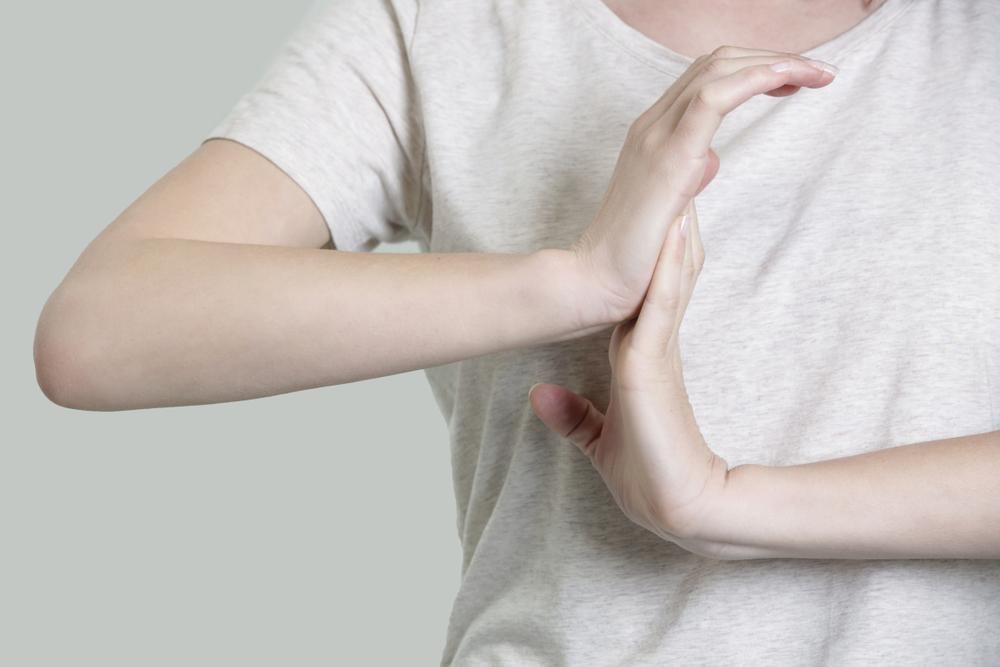Calling all new mummies, daddies and caregivers! Does your thumb ache? Does your painful thumb limit your wrist movements and grasping strength? Well, actually this pain doesn’t just affect parents with babies. But people of different ages who heavily rely on the power of their thumbs.
WHAT IS MUMMY THUMB?
As it’s most often seen in those aged 30 to 50 years old and women three times more than men, this pain is called ‘mummy thumb’.
Mummy thumb is sometimes also called:
- Baby wrist.
- Cradle thumb.
- New mother’s disease.
- Wrist tendonitis.
- De Quervain’s tenosynovitis (or de Quervain’s tendonitis, syndrome, or disease).
Mummy thumb often appears in new parents because they regularly need to lift their babies for feeding and diaper changes. Essentially, the tendons that stretch from the thumb to the wrist are overused and inflamed. They rub against the ‘tunnel’ that encloses them and that triggers discomfort, pain and swelling on the base of the thumb or near the wrist.
WHAT DOES MUMMY THUMB FEEL LIKE?
Mummy thumb is a sharp or dull pain at the base of the thumb or at the thumb side of the wrist. Here’s a checklist of its symptoms:
- Sharp or dull pain extending from the wrist to the thumb.
- Difficult to grab, hold, or pinch things.
- Stiff or tender thumb.
- Swollen wrist or thumb.
- A little bump or nodule formed at the base of the thumb.
- Thumb makes a snapping or ‘locking’ sound.
- New mothers typically experience symptoms between four to six weeks after giving birth.

The exact causes of mummy thumb are yet to be determined. However, doctors say it’s likely due to repetitive hand movements involving the thumb or wrist.
WHAT TRIGGERS MUMMY THUMB?
The exact causes of mummy thumb are yet to be determined. However, doctors say it’s likely due to repetitive hand movements involving the thumb or wrist.
Such hand movements could be the result of:
- Knitting.
- Using tools.
- Carrying heavy bags.
- Scrolling, texting or using a smartphone for extended periods.
- Typing.
- Carrying a baby for a long time in certain positions.

Other possible causes of mother’s thumb include:
- Hormonal changes during pregnancy.
- Wrist strain or injury.
- Rheumatoid arthritis.
When you overuse or flex your thumbs too much, tiny tears can occur inside or around the tendon. This phenomenon is called a repetitive strain injury (RSI). Statistically, middle-aged females are more prone to mummy thumb, especially after pregnancy.

WHAT ARE THE SOLUTIONS FOR MUMMY THUMB?
Mummy thumb is almost inevitable. Nevertheless, it’s only temporary and will heal on its own. Though, as the saying goes, prevention is better than cure. So, here are some solutions to avoiding and managing mummy thumb:
- ACTIVITY MODIFICATION
- Avoid using your thumb, wrist, and hand as much as possible by switching your hands once in a while.
- Change the way you carry your baby such as baby wearing, using strollers, using a sling or pillow when nursing or simply using your palms to scoop up your baby’s head and lower back.
- Regularly relax and stretch your hand and wrist throughout the day.

- HOME REMEDIES
- Doing a contrast bath by giving heat therapy to your hand with a heating pad or warm water and then switching to cold therapy with cold water or an ice pack. This temperature change is said to constrict and dilate the blood vessels. Thus, increasing blood and oxygen circulation into tissues.

- Exercises:
- Thumb lift
- Place your hand on a flat surface, palm up.
- Lift and curl your thumb over your palm to make a “C” shape.
- Hold for about 6 seconds.
- Repeat up to 12 times.
- Passive thumb flexion
- Hold your hand in front of you like you’re about to shake someone’s hand.
- Use your other hand to bend your thumb down at the place where your palm meets your thumb.
- Hold for 15 to 30 seconds.
- Repeat up to 4 times.
- Finkelstein stretch
- Hold both arms out in front of you, palms up.
- Bend your affected thumb toward your palm.
- Use your other hand to gently stretch your thumb and wrist toward your forearm until you feel the stretch on the thumb side of your wrist.
- Hold for at least 15 seconds and repeat up to 4 times.
- Thumb lift
- MEDICATION
- Over-the-counter anti-inflammatory medications can aid in relieving pain. However, it’s vital to consult your doctor if you’re breastfeeding.

- SPLINT
- Ask your doctor for a splint or brace for your fingers. The thick fabric and light plastic with adjustable straps will prevent your fingers from exertion.

- INJECTION
- If the pain persists, make an appointment with a specialist. A cortisone (steroid) shot maybe the next step. But not to worry as it is safe for nursing mothers.

To recap, mummy thumb is a brief yet exasperating pain around the thumb and wrist area that could limit daily hand movements.
- SURGERY
- In extremely rare cases, a tendon release surgery can be a permanent fix. The procedure involves reducing pressure on the tendon by making an incision and relieving the swollen tendon.

Home remedies should improve pain within two to four weeks. Nevertheless, talking to a doctor can provide you with a steady diagnosis. To recap, mummy thumb is a brief yet exasperating pain around the thumb and wrist area that could limit daily hand movements. Unfortunately, its primary victims are mothers during and after pregnancy and also caregivers of babies. Fortunately, there are many ways to avoid and overcome the pain. Mummy thumb is not normal and it must be dealt with. Take care, dear mummies!











